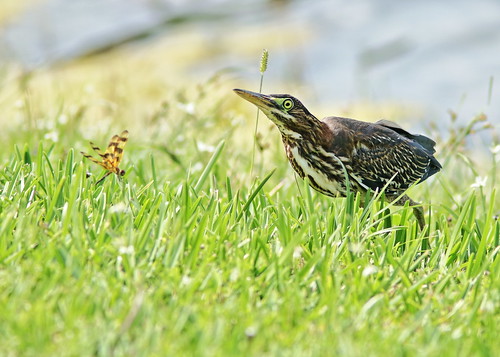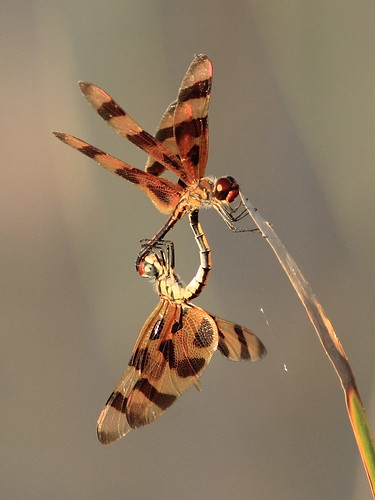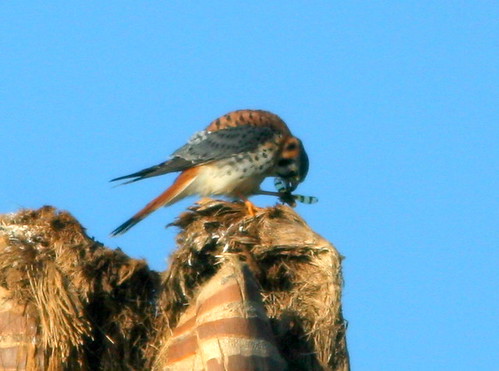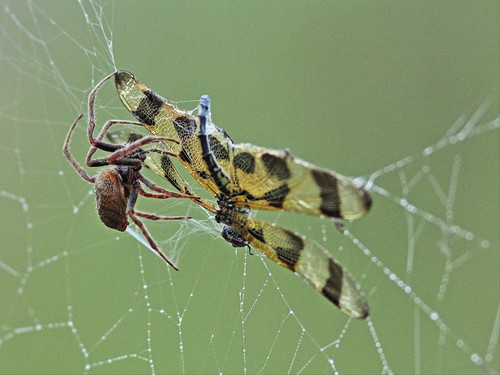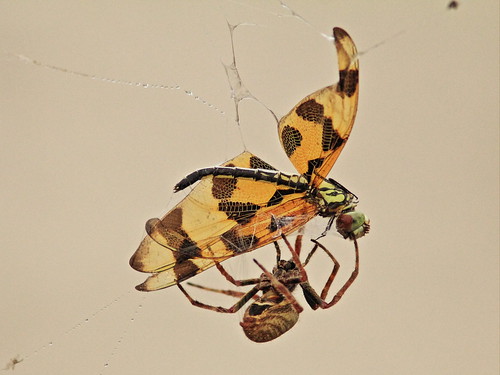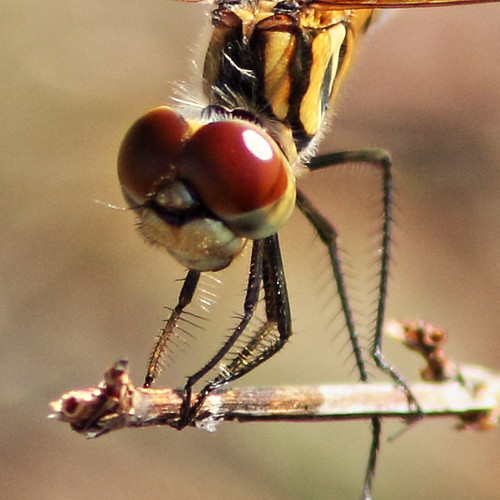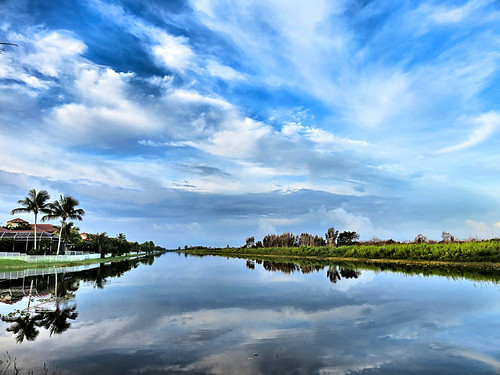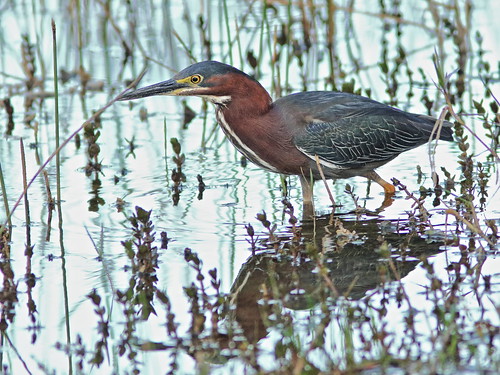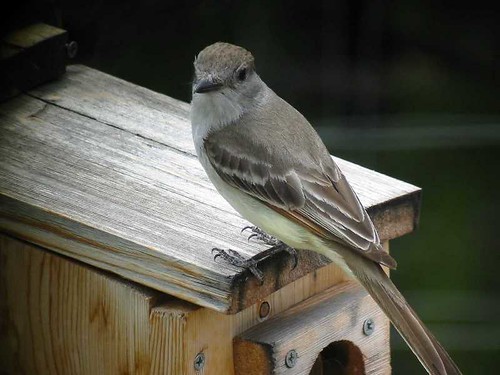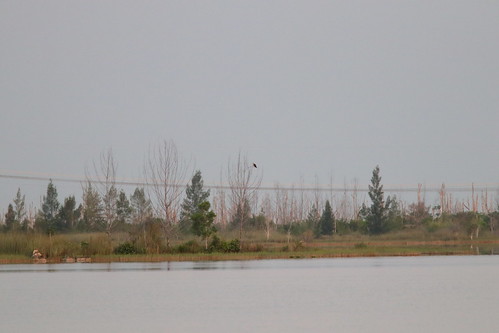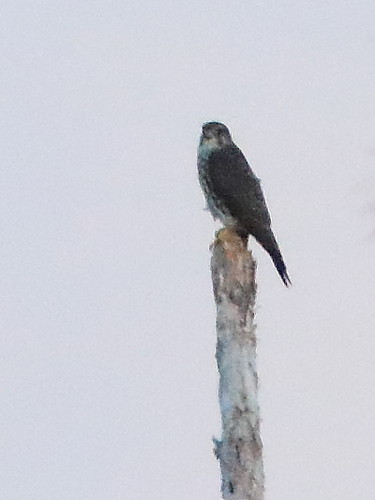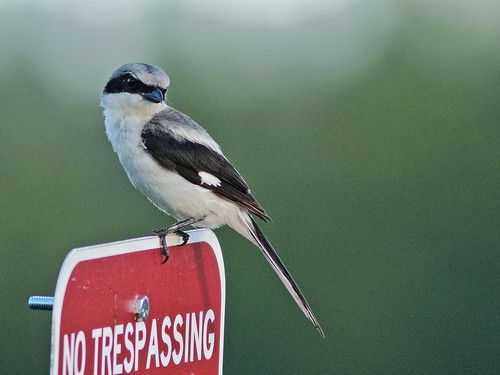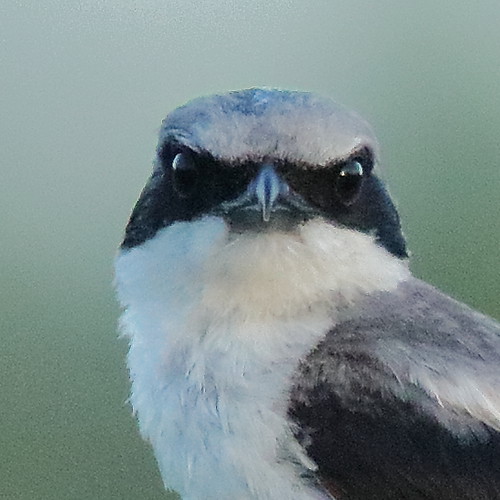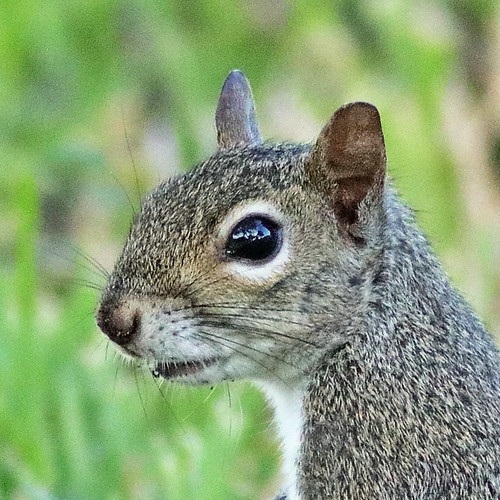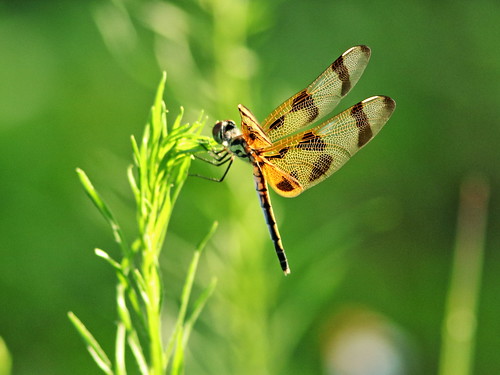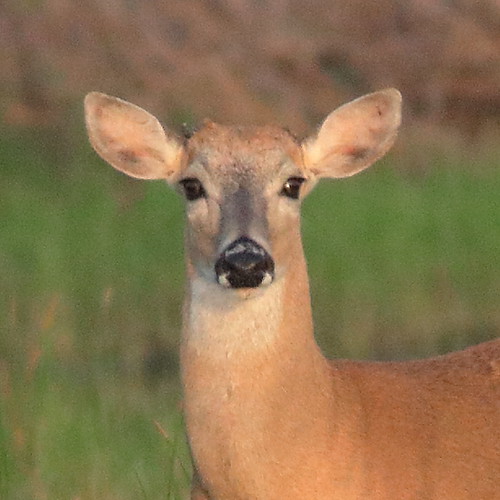Few people are up and about. This morning they are not hurrying to work or bringing kids to school. Operation of machinery such as lawn mowers and other power equipment is restricted on Sunday. Yes, the sounds of human activity are much reduced, but it is not truly silent.
In the spring, Northern Mockingbirds may sing very early or even all night when the moon is bright:
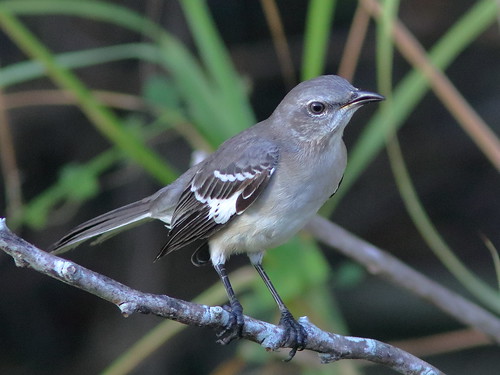
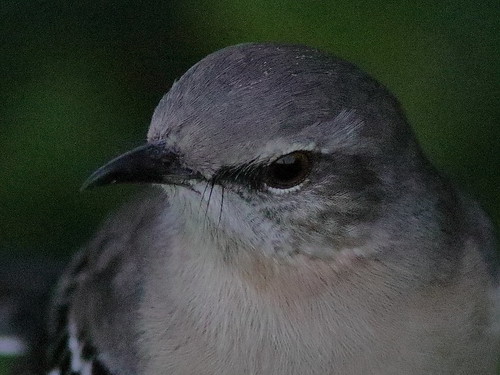
In the pre-dawn darkness we are surrounded by the sounds of life, from the mosquitoes humming in our ears, the songs of crickets, grasshoppers, toads, tree frogs and the sweet warbling of geckos. Most birds are not yet singing-- but listen closely to hear the Chuck-will's-widow as it repeats its name in a never-ending cadence, or, overhead... the call of a Common Nighthawk:

A nighthawk is barely visible as it suddenly zooms down and pulls up with a loud "woosh" just over my head. Is it attacking me or the cloud of mosquitoes that I have attracted? Is there a nest or are young birds nearby?

Why did I fail to identify the calls of screech-owls for the first couple of years after I started taking these early morning walks? I think I did hear them but did not distinguish their soft monotone trill from the competing ambient noise of automobiles, airplanes and air conditioners. Now, I not only hear, but also take pains to listen.
Eastern Screech-Owl:

Common sounds become background "white noise" which our brains filter out. One autumn morning shortly after returning from our second home in Illinois I heard but almost failed to recognize the calls of a species which infrequently visits south Florida during migration.
I had become so accustomed to the sound of its voice in Illinois that I did not immediately realize that this American Robin was was out of place, atop a tree along the trail:

If the Moon is bright, Mourning Doves may already be cooing, and Blue Jays calling.

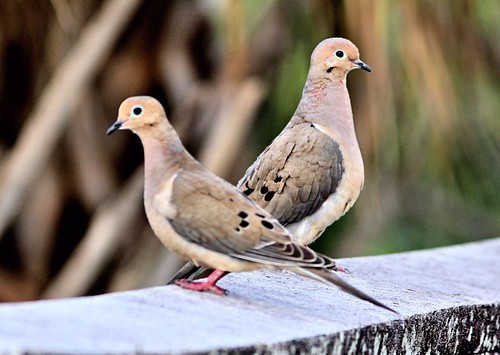
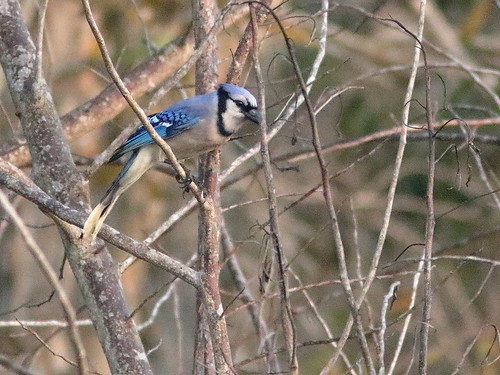
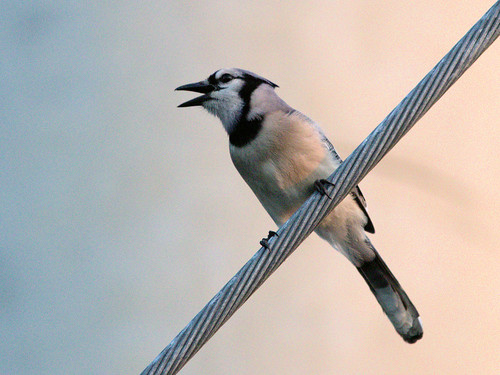
The sky is lighting up. The Northern Cardinals begin their morning chorus almost exactly a half hour before sunrise. At the same time the Chuck-will's-widow stops its chant. Why? Something triggers opposite responses in two different species. Poetically speaking, is it the length of the night, or the strength of the light?
A male cardinal sings from a conspicuous perch, but listen closely...
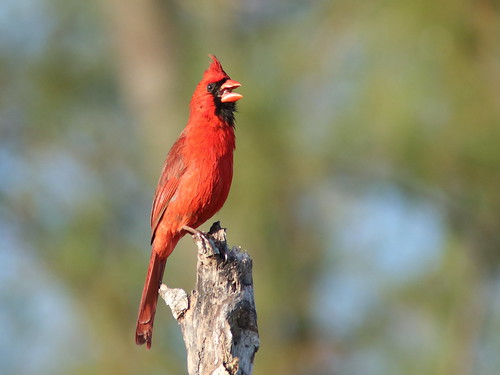
...the female may join him in a duet:

Still well below the horizon, the sun has created a deepening red glow in the eastern sky. On this spring morning, Jupiter was still visible above the crescent Moon (March, 2019):
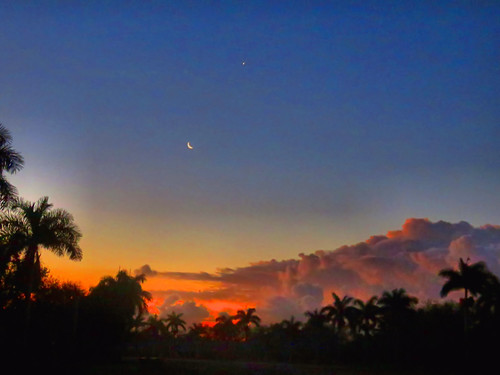
When I reach the shore of the lake I enjoy watching the show as the sky changes minute by minute. Photos do not capture all the colors I see: pink, rose, orange, yellow, purple, blue and green and shades in between.
The Thunder Moon of July sinks into the line of storm clouds:

Facing west towards the lake, I am conscious of riding on a sphere which is rotating backward. The shadow of the earth's horizon behind me is moving steadily over my head and falling down in front of me. First rays of the invisible sun tint the eastern sky but do not pierce the darkness of the land on the opposite shore. Reaching the storm clouds over the Everglades, the rays outline their tops before setting their upper reaches on fire.
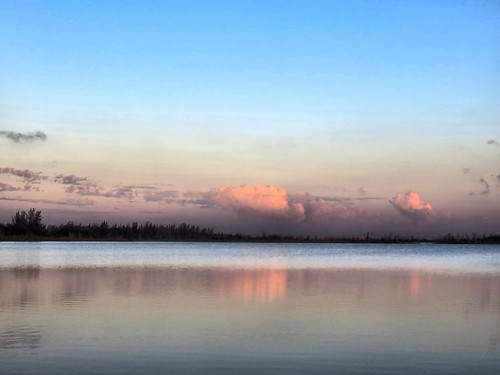
Before the sun ever gets down to the treetops on the opposite shore, it has illuminated the entire sky.

Then the brilliance of the vegetation is revealed, and suddenly the colors of the sky fade into gray and blue tones.
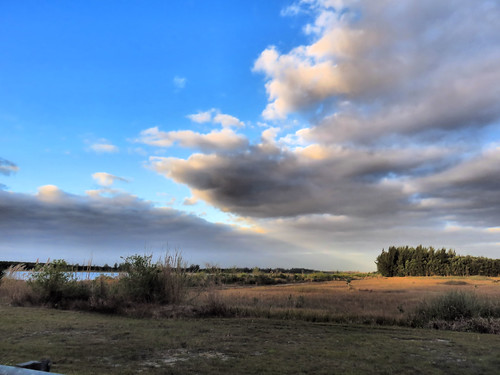
Most mornings, usually around sunrise, we see one or sometimes two adult Bald Eagles, navigating a perfect course from the vicinity of their nest, located to the northwest, towards the large lake in our subdivision which has a lighthouse on a small island.
Their two eaglets have migrated north to find cooler waters, but the adults choose to stay here all summer. The lake, with its fish, ducks and herons will feed them. They will also keep watch over the nest and chase away any intruders such as Great Horned Owls, Raccoons or crows which could set up housekeeping and claim it as their own.

A young Marsh Rabbit nibbles on the grass and seems to ignore me. Hoping for a nice image, I cautiously mover closer to it, a few steps at a time, stopping to take yet another photo in case it decides to flee.
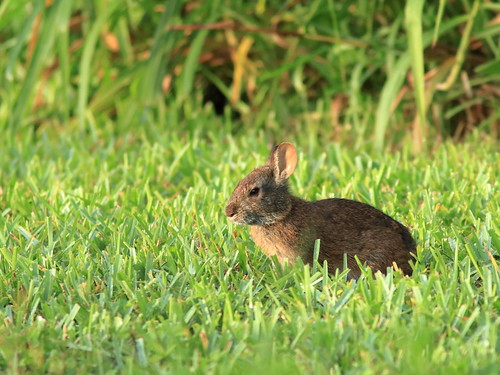
Yet it allows me to get ever so close before hopping off. Well, "hopping" is not really accurate in the case of this species. Running or, as I see it, galloping (as in "giddy-yap") better describes their mode of escape, as their hind legs are much shorter than those of other rabbit species. They also have big feet with splayed toes to help propel them through the water.
Although closely related to the Eastern Cottontail Rabbit, the Marsh Rabbit does not have white on its tail and its undersides are dull gray, as can be glimpsed in this photo:
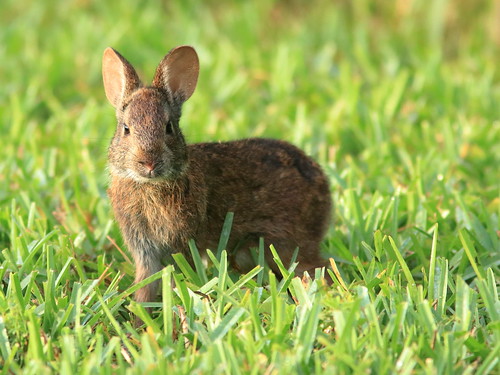
(A reader recently asked why their ears were so short, as longer ears normally benefit rabbits and hares in hot climes by dispersing body heat. I could not find a science-based answer, but noted that they usually swim with their bodies underwater and maybe short ears provide less resistance. They also have very sparse fur, which may help keep them cool.)
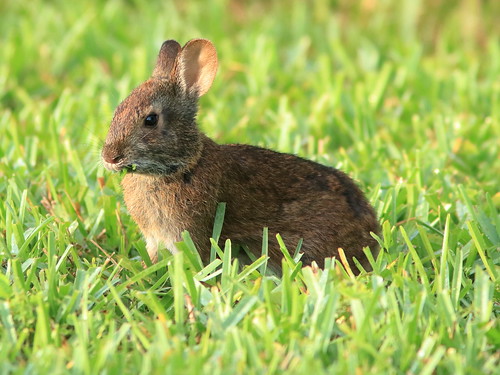
As the land heats up, the rising air pulls in winds from the ocean to the east, spoiling the mirrored surface of the lake. Moisture in the air condenses into clouds which portend afternoon storms. It looks like it will be just another summer day for south Florida.

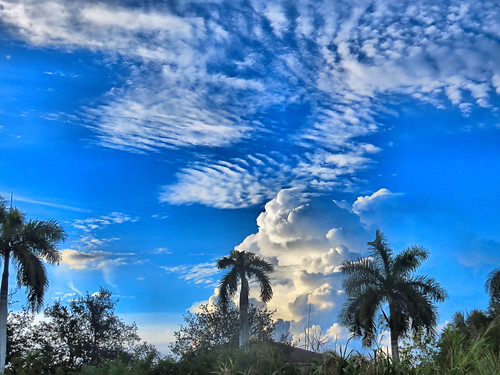
Quote from an a pertinent article at this link: How bird-watching could be incredibly beneficial for your mental health
"Perhaps one of the most interesting results of the studies was the fact that even if people rated their depression/stress/anxiety levels high in the mornings, several hours of bird-watching were seen to consistently raise these feelings and helped people to feel much happier in themselves and the world around them.... What’s more, it didn’t matter what kind of birds were spotted; whether these were native birds or all different species and varieties or lots of the same species, the benefits seem to remain the same."
= = = = = = = = = = = = = = =
Linking to Misty's CAMERA CRITTERS,
Linking to Eileen's SATURDAY'S CRITTERS,
Linking to SKYWATCH FRIDAY by Yogi, Sylvia and Sandy
Linking to WEEKEND REFLECTIONS by James
Linking to BirdD'Pot by Anni
Linking to Our World Tuesday by Lady Fi
Linking to Wild Bird Wednesday by Stewart
Linking to Wordless Wednesday (on Tuesday) by NC Sue
Linking to ALL SEASONS by Jesh
Linking to Fences Around the World by Gosia
________________________________________________
Please visit the links to all these memes to see some excellent photos on display
________________________________________________




